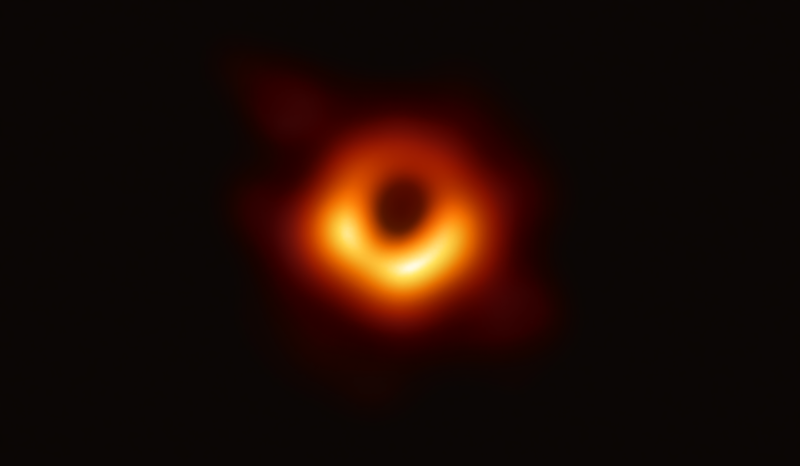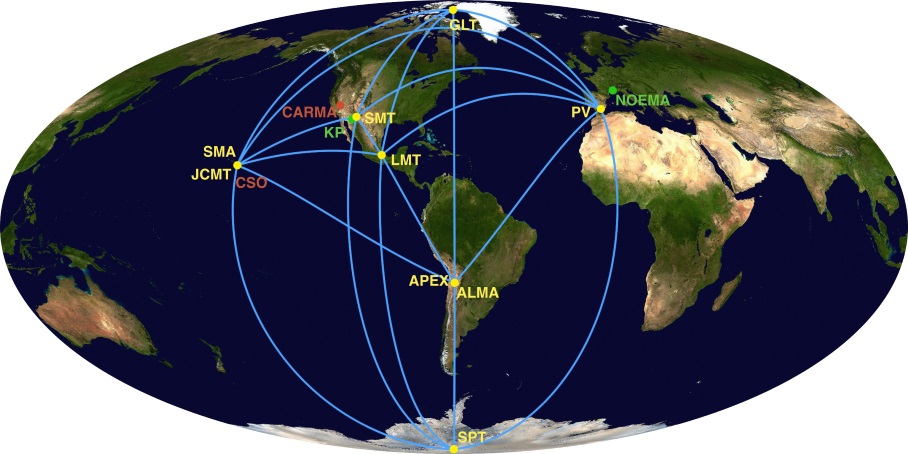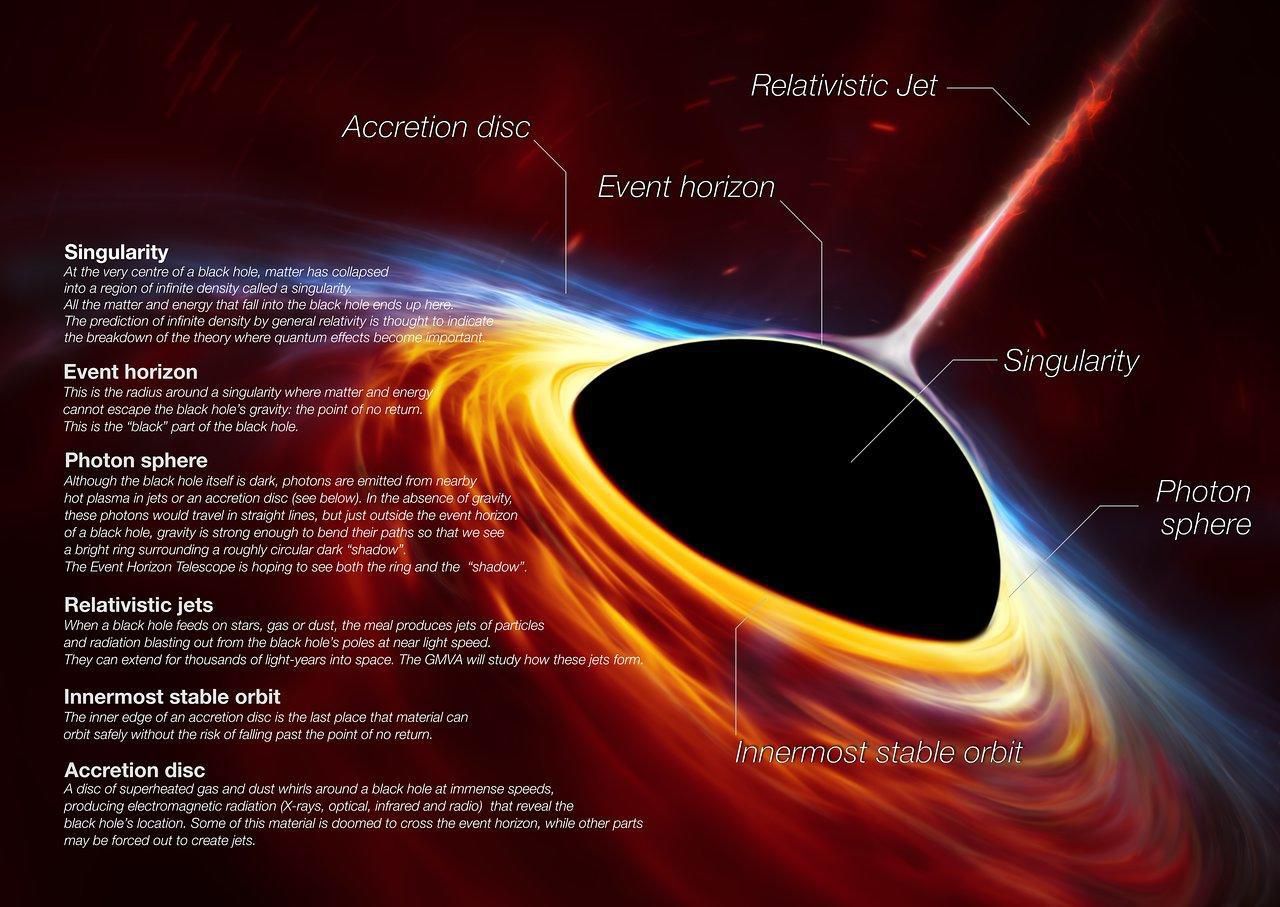
Today was a historic day in astronomy, as scientists unveiled the first-ever images of a black hole. Such an achievement has been dreamt of for a long time, and now today it is finally reality. The breakthrough was announced this morning by researchers in six different press conferences around the world.
The observations were made by the Event Horizon Telescope (EHT), a planet-wide series of eight ground-based radio telescopes that work together as one instrument – creating a virtually Earth-sized telescope and the only way that the black hole could be imaged. Only an international collaboration could produce such an incredible result.
The supermassive black hole being targeted is in the heart of galaxy Messier 87, 55 million light-years from Earth. This black hole is a monster – 6.5 billion times the mass of the Sun.
“We have taken the first picture of a black hole,” said EHT project director Sheperd S. Doeleman of the Center for Astrophysics | Harvard & Smithsonian. “This is an extraordinary scientific feat accomplished by a team of more than 200 researchers.”
“This is an amazing accomplishment by the EHT team,” said Paul Hertz, director of the astrophysics division at NASA Headquarters in Washington. “Years ago, we thought we would have to build a very large space telescope to image a black hole. By getting radio telescopes around the world to work in concert like one instrument, the EHT team achieved this, decades ahead of time.”

The exciting result has been published in six different papers in a special issue of The Astrophysical Journal Letters:
- The Shadow of the Supermassive Black Hole
- Array and Instrumentation
- Data Processing and Calibration
- Imaging the Central Supermassive Black Hole
- Physical Origin of the Asymmetric Ring
- The Shadow and Mass of the Central Black Hole
There is also a special Focus Issue detailing the findings.
The images taken are very close to what had been predicted, and also help to further confirm Einstein’s general relativity theory.
“If immersed in a bright region, like a disc of glowing gas, we expect a black hole to create a dark region similar to a shadow – something predicted by Einstein’s general relativity that we’ve never seen before, explained chair of the EHT Science Council Heino Falcke of Radboud University, the Netherlands. “This shadow, caused by the gravitational bending and capture of light by the event horizon, reveals a lot about the nature of these fascinating objects and allowed us to measure the enormous mass of M87’s black hole.”

“Once we were sure we had imaged the shadow, we could compare our observations to extensive computer models that include the physics of warped space, superheated matter and strong magnetic fields. Many of the features of the observed image match our theoretical understanding surprisingly well,” said Paul T.P. Ho, EHT Board member and Director of the East Asian Observatory. “This makes us confident about the interpretation of our observations, including our estimation of the black hole’s mass.”
The bright ring seen in the images is the result of light being bent around the black hole itself (inside the central circular dark region, which is really the shadow of the black hole). The actual black hole, the diameter of its “edge” or event horizon – the “point of no return” – is about 2.5 times smaller than the circular shadow and can’t be seen. The event horizon is a whopping 25 billion miles (40 billion kilometers) across – 4.4 times wider than the orbit of Neptune!
Black holes are objects that have immense mass, compacted into a small size of infinite density, called a singularity. They are some of the most bizarre phenomena known to exist in the universe; they warp spacetime around them and their gravity is so strong that nothing can escape from within the event horizon, not even light. We can only “see” them because of how they bend light and super-heat material near them, which orbits the black hole as it gets drawn into it.
Today’s announcement is a breakthrough many years in the making.

“We have achieved something presumed to be impossible just a generation ago,” noted Doeleman. “Breakthroughs in technology, connections between the world’s best radio observatories, and innovative algorithms all came together to open an entirely new window on black holes and the event horizon.”
As well as EHT, NASA’s Chandra X-ray Observatory, Nuclear Spectroscopic Telescope Array (NuSTAR) and Neil Gehrels Swift Observatory space telescope missions, using different varieties of X-ray light, also observed the M87 black hole around the same time. If EHT observed changes in the structure of the black hole’s environment, data from these other telescopes could be used to help scientists figure out what was happening.
“X-rays help us connect what’s happening to the particles near the event horizon with what we can measure with our telescopes,” said Joey Neilsen, an astronomer at Villanova University in Pennsylvania, who led the Chandra and NuSTAR analysis on behalf of the EHT’s Multiwavelength Working Group.
This first direct look at a black hole is already incredible, but future observations should provide an even more detailed glimpse at one of the most mind-blowing phenomena in the universe.
More information about the Event Horizon Telescope is available here.





